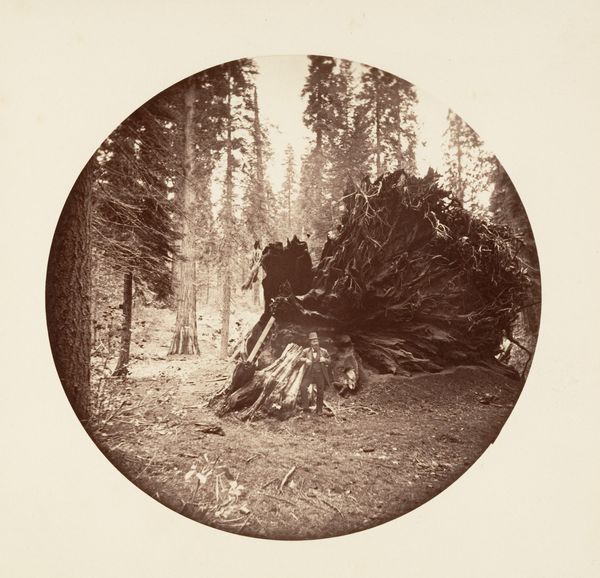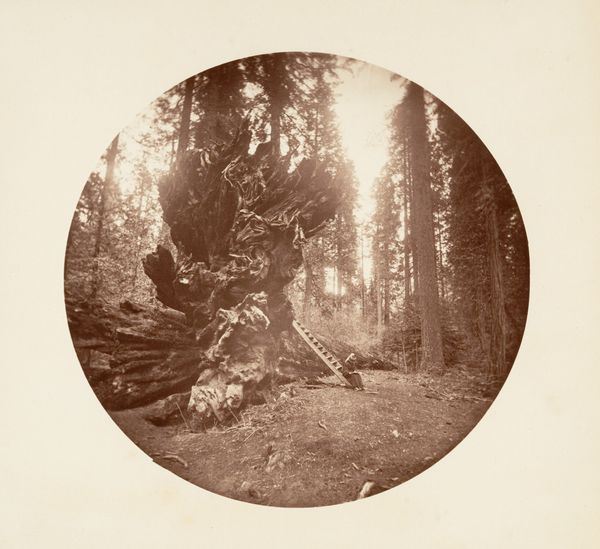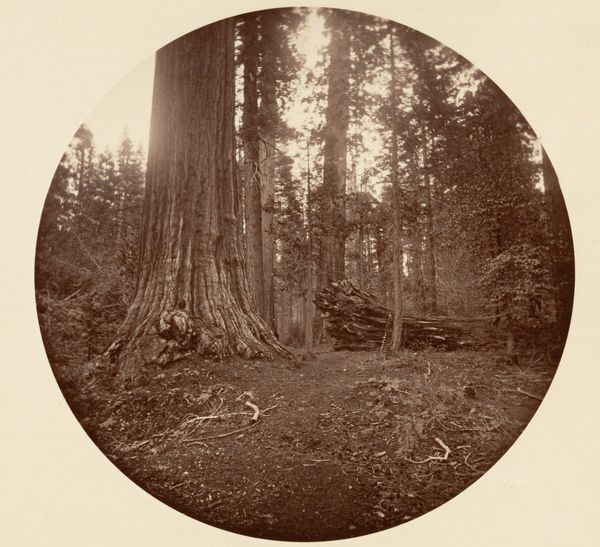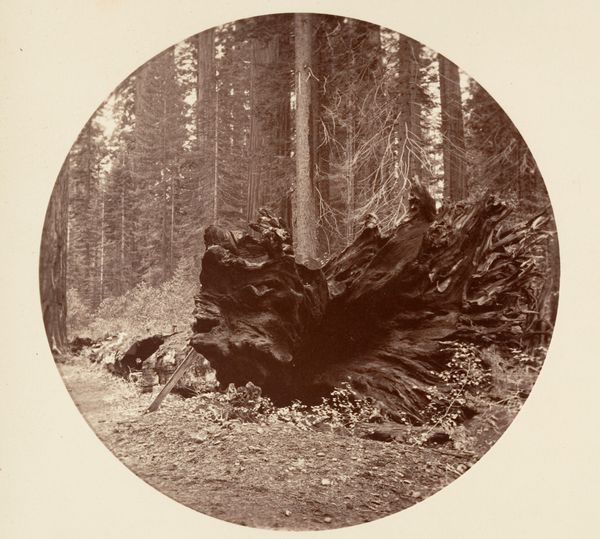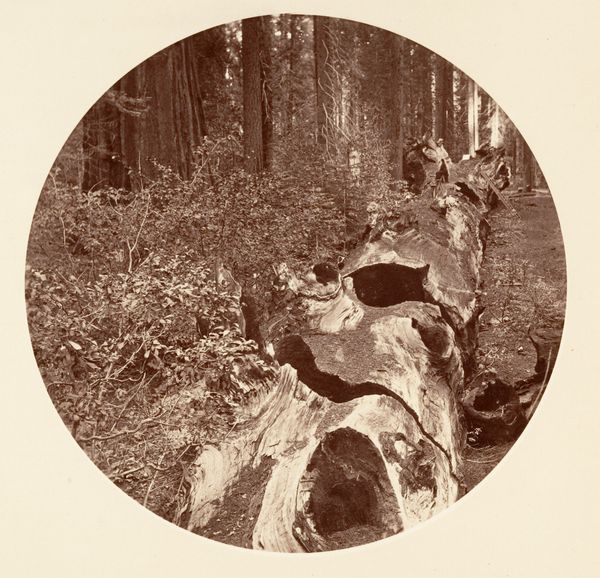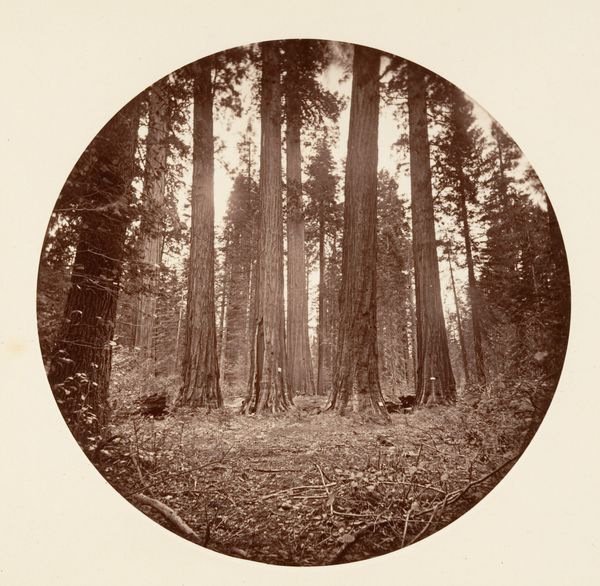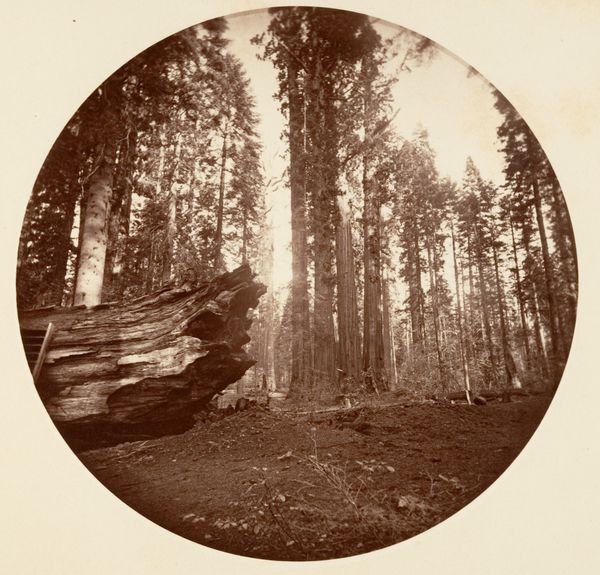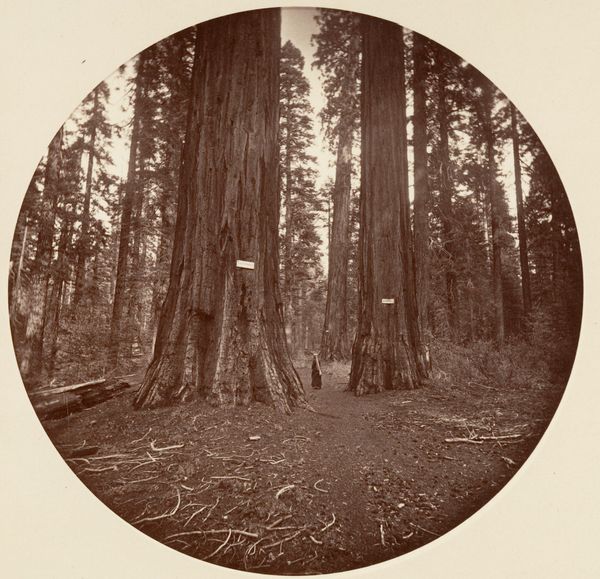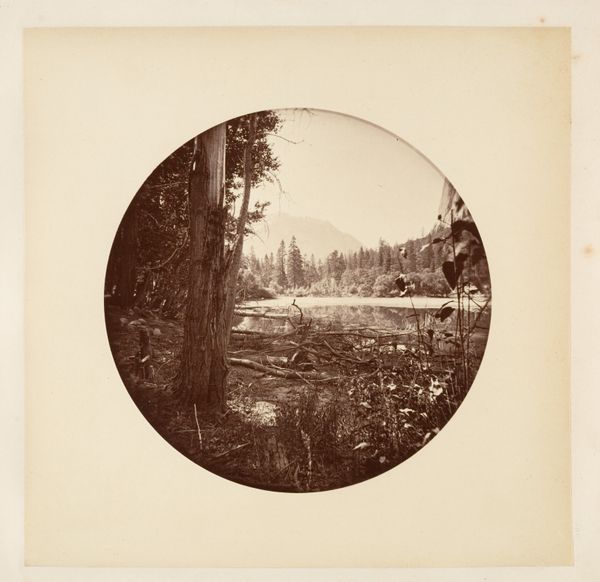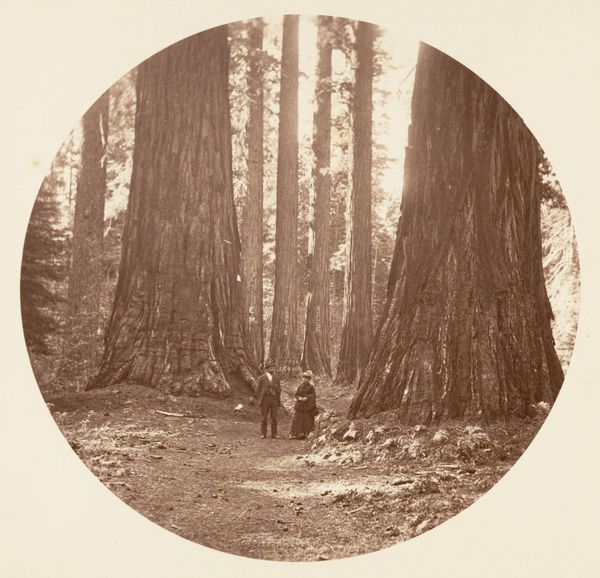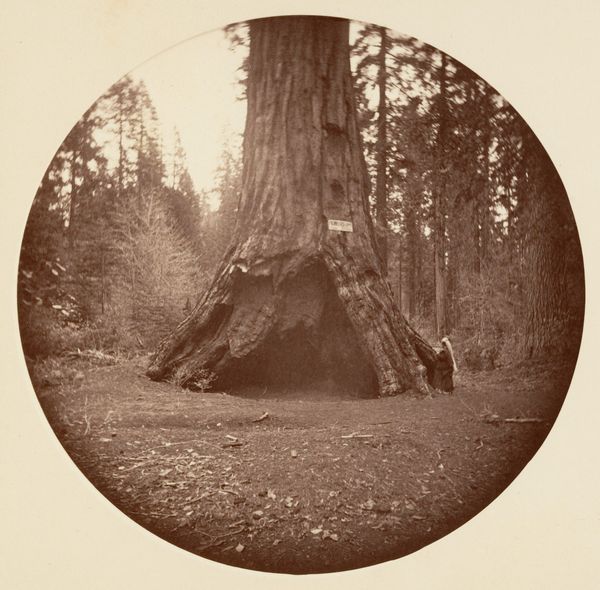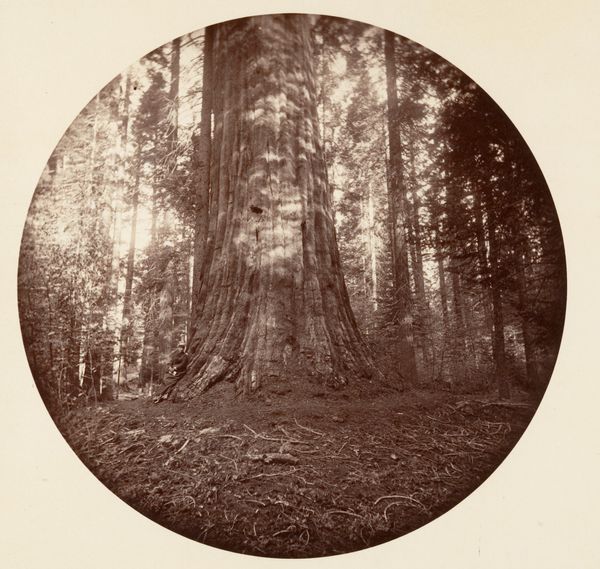![[Yosemite National Park, California] by Carleton E. Watkins](/_next/image?url=https%3A%2F%2Fd2w8kbdekdi1gv.cloudfront.net%2FeyJidWNrZXQiOiAiYXJ0ZXJhLWltYWdlcy1idWNrZXQiLCAia2V5IjogImFydHdvcmtzL2JiNDI4YWUzLWNhYTQtNGU1OC04ZWU3LTY0YTdhNzZiMTUxMS9iYjQyOGFlMy1jYWE0LTRlNTgtOGVlNy02NGE3YTc2YjE1MTFfZnVsbC5qcGciLCAiZWRpdHMiOiB7InJlc2l6ZSI6IHsid2lkdGgiOiAxOTIwLCAiaGVpZ2h0IjogMTkyMCwgImZpdCI6ICJpbnNpZGUifX19&w=3840&q=75)
Dimensions: Image: 12.5 x 12.5 cm (4 15/16 x 4 15/16 in.), circular Album page: 24 x 25.1 cm (9 7/16 x 9 7/8 in.)
Copyright: Public Domain
Carleton Watkins created this albumen print of Yosemite National Park sometime in the late 19th century. Watkins was part of a wave of photographers who turned their lenses to the American West, often with an eye toward expansion and industry. Here, we see a stand of trees, and a fallen giant in the foreground. Watkins’s photographs were celebrated for capturing the sublime beauty of nature, and were instrumental in convincing Congress to designate Yosemite as a National Park in 1864. But what does it mean to preserve a landscape, especially when that landscape was already inhabited? What does it mean to see the sublime when it comes at the expense of indigenous populations? Watkins’s image invites us to consider whose vision of nature is being presented, and whose stories are being erased. It is an image of quiet beauty, but one that speaks to larger questions of land, ownership, and the complex relationship between preservation and erasure.
Comments
No comments
Be the first to comment and join the conversation on the ultimate creative platform.
